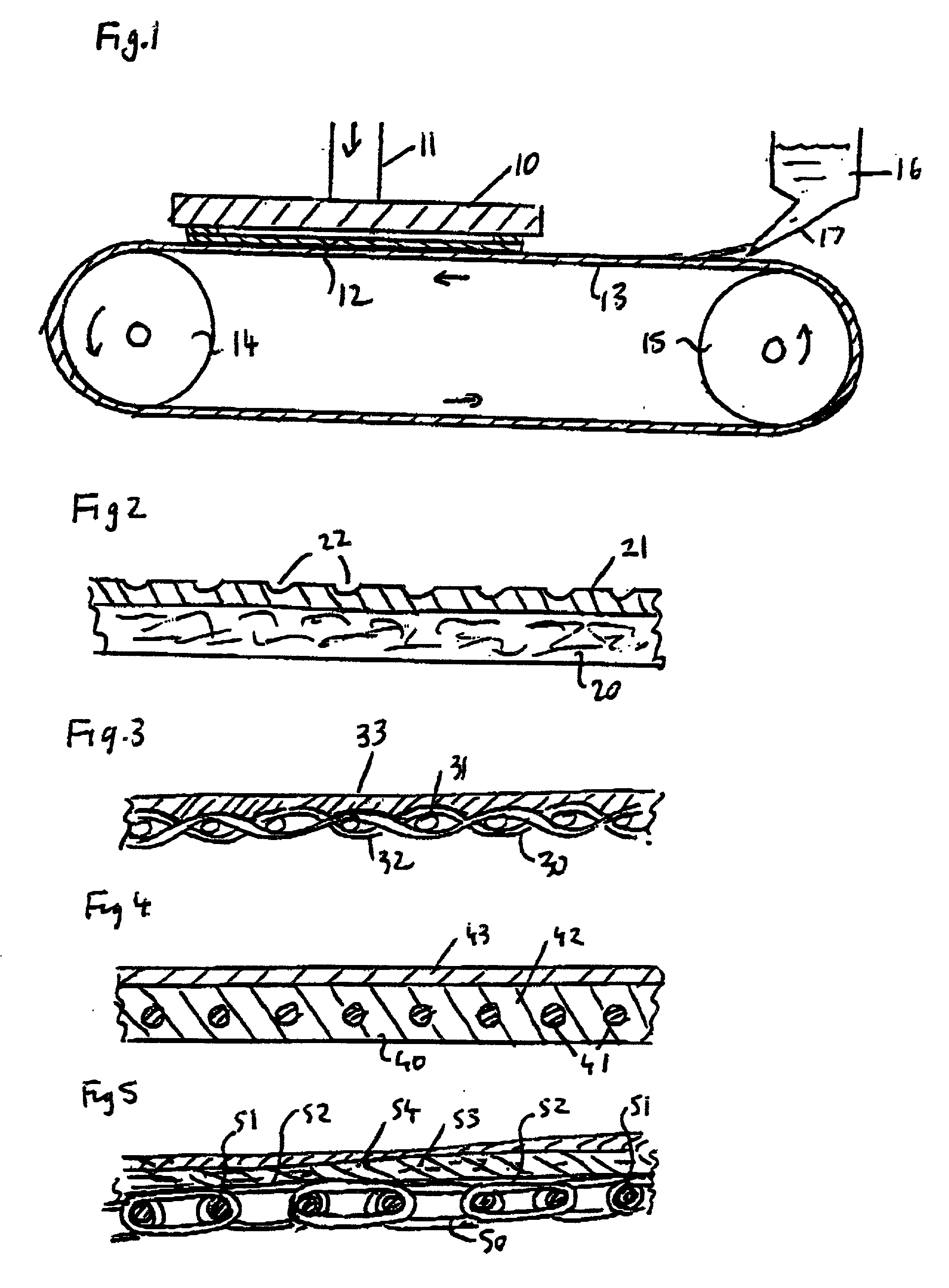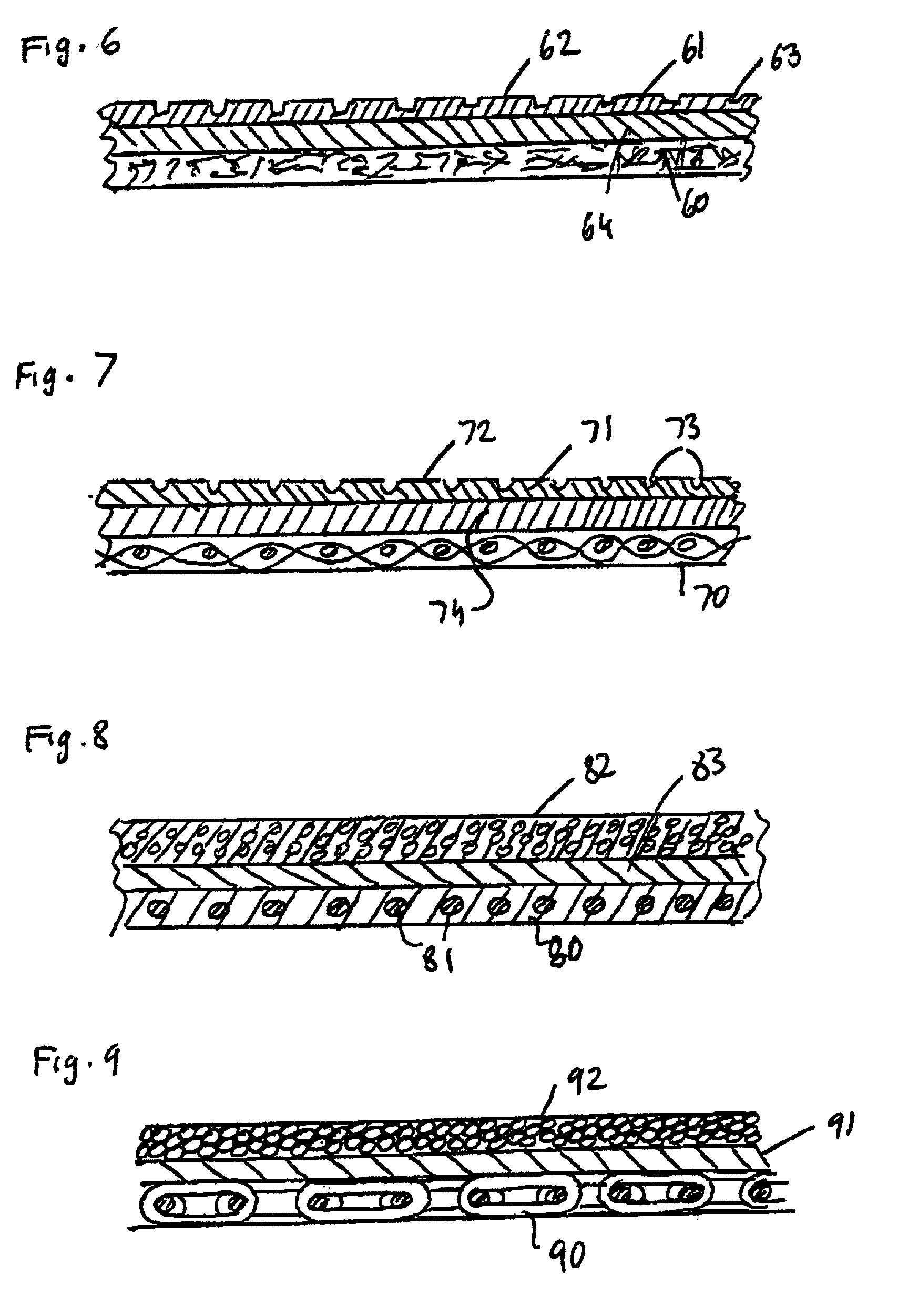Polishing silicon wafers
a belt-type apparatus and silicon wafer technology, applied in the direction of edge grinding machines, manufacturing tools, other chemical processes, etc., can solve the problems of increasing the number of layers applied, the design size of such integrated chips is steadily decreasing, and the micro-circuits are produced ever smaller and increasingly complex, so as to achieve high tensile strength, low elongation, and high tension
- Summary
- Abstract
- Description
- Claims
- Application Information
AI Technical Summary
Benefits of technology
Problems solved by technology
Method used
Image
Examples
Embodiment Construction
[0032] FIG. 1 is a diagrammatic view of a continuous belt machine for polishing and planarising silicon wafers. A platen 10 operable by a hydraulic or pneumatic ram 11, holds a silicon wafer 12 flat on the surface of a continuous belt 13, after the wafer 12 has been put in place by a remotely controlled or autonomous handling system such as a robotic arm (not shown). Belt 13 is passed around end rollers, 14, 15 and is driven in the sense indicated by the arrows on the drawing. A polishing slurry, containing very fine grade abrasive is fed onto the upper surface of the belt from a reservoir 16, through a feeder 17. An example of a suitable polishing slurry is disclosed in WO 96 / 16436 by Advanced Micro Devices, Inc. The feeder 17 may be associated with means known in the prior art for achieving the desired distribution of the slurry on the belt, prior to encountering the wafer 12 which is to be polished by the chemical-mechanical polishing process.
[0033] Polishing is achieved by the m...
PUM
 Login to View More
Login to View More Abstract
Description
Claims
Application Information
 Login to View More
Login to View More - R&D
- Intellectual Property
- Life Sciences
- Materials
- Tech Scout
- Unparalleled Data Quality
- Higher Quality Content
- 60% Fewer Hallucinations
Browse by: Latest US Patents, China's latest patents, Technical Efficacy Thesaurus, Application Domain, Technology Topic, Popular Technical Reports.
© 2025 PatSnap. All rights reserved.Legal|Privacy policy|Modern Slavery Act Transparency Statement|Sitemap|About US| Contact US: help@patsnap.com


